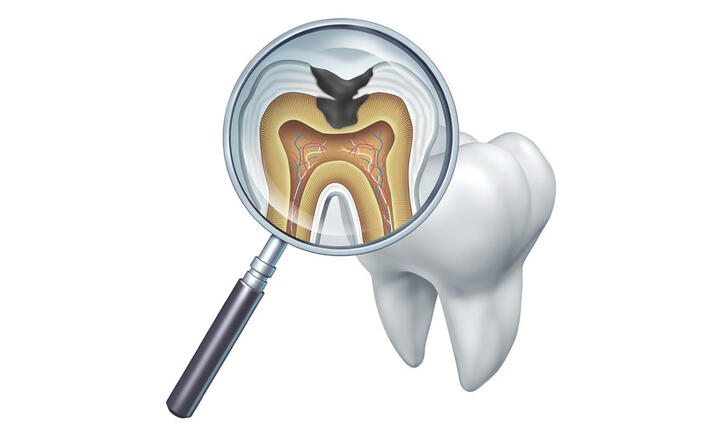This treatment is performed in case of inflammation as a result of too advanced tooth decay or injury. Thanks to this treatment, an otherwise dead tooth can continue to function in the mouth. High-quality mechanical and chemical cleaning, and subsequent hermetic filling of the root canals, is essential.
Endodontics - Treatment of Dental Root Canals

Endodontics is an the area which deals with the treatment of the root canals of teeth, in other words, the inner spaces in teeth.
Don't Wait for Toothache
Teeth hide very vulnerable tissue under the dental crown, which is the dental pulp, which can be very easily damaged. However, we do not even need to know about the development of tooth decay. Inflammation of the tooth can spread in the oral cavity even though you do not feel any toothache at all. Tooth decay continues until the bacteria penetrate into the medullary cavity. This causes acute inflammation of the dental pulp, which irreversibly damages the dental nerve. Only a dentist or dental hygienist can alert you about tooth decay. In its advanced stage, there is inflammation of the dental nerve, which is located inside the tooth as well as the root canal. Inflammation begins as a rapidly deteriorating sensitivity to thermal stimuli. If you do not visit the dental office, untreated inflammation will spread further to the bone, and swelling will occur. The only option may be tooth extraction. We try to keep our surgical procedures pain-free by only treating the root canal in inflamed or dead teeth.
How does it work?
Before endodontic treatment, we perform an X-ray of the teeth, necessary to obtain information about, for example, the root system of the tooth, its shape, irregularities, and damage to the dental crown. The treatment is completely painless, because we always work under local anesthesia. To obtain a clean operating field, we use disposable, sterile instruments for root canals, alongside a kofferdam, which is a rubber membrane surrounding the treated tooth, which prevents contamination of the root system with saliva or blood.
We remove all infected substances from the root canal using special endodontic instruments, then chemically disinfect the ducts, subsequently drying and filling them. Guttaperch pins and a liquid binder, or sealer, are used for filling, which solidifies in the duct over time. Depending on other circumstances, the filling can take place at the same visit as the cleaning or a treatment, and the disinfection insert is still temporarily applied to the ducts. During the treatment, it is necessary to know the length of the individual root canals, which varies for different teeth. We measure it using a device called an apexlocator, and we also use X-rays. It is important that the duct is well filled along its whole length. This avoids reinfection and achieves decent longevity.
After treatment of the dental canals, it is also necessary to reconstruct the outer part of the tooth, most often with a crown or overlay.
One treatment, two views
Endodontic treatment from the doctor's point of view is demanding in terms of procuring quality tools and materials, as well as finding training in the field with high levels of precision. From the patient's point of view, the treatment is demanding in terms time. In the case of multi-root teeth, treatment can last up to three to four hours, as well as in financial terms. The reward is preservation of your tooth and avoding its extraction. It is still valid that the best implant is your own well-treated root.